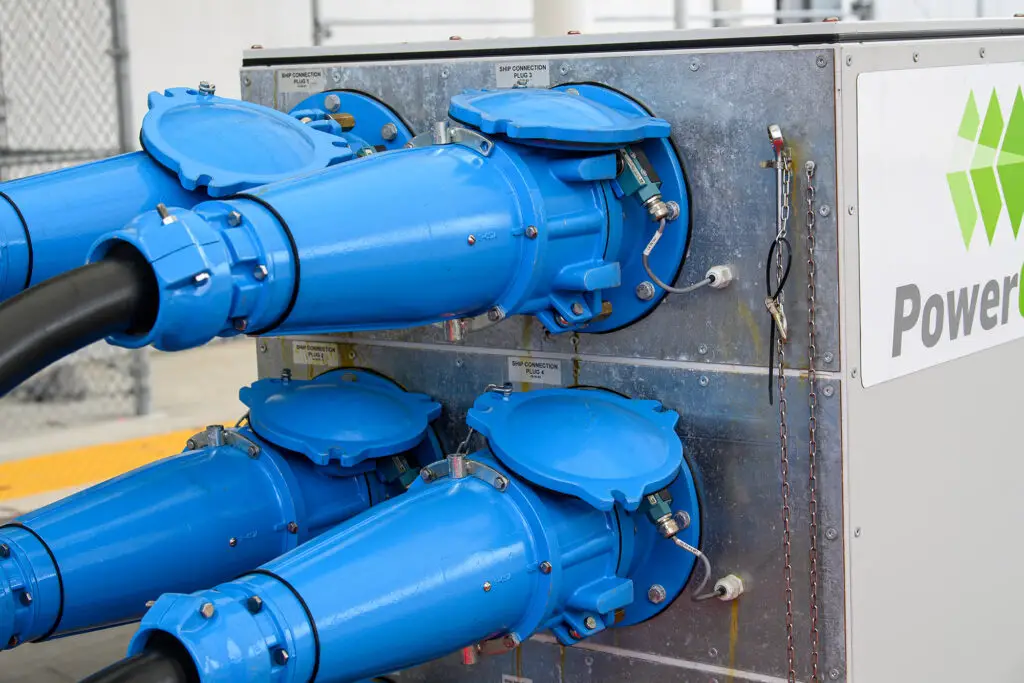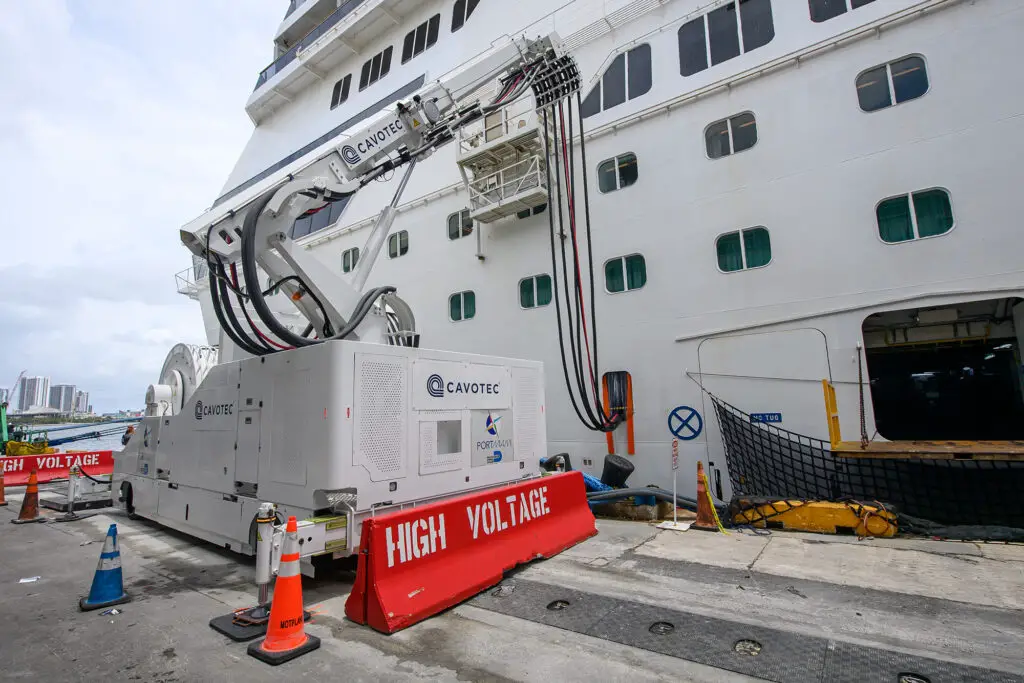Shore Power Comes Online in Miami
One of the largest cruise ports in the world just went live with shore power, marking a significant step towards a more sustainable cruising future. The Port of Miami, in partnership with Carnival Corporation, MSC Cruises, Norwegian Cruise Line Holdings, Royal Caribbean Group, Virgin Voyages, and Florida Power & Light Company, has announced that five of its cruise ship berths are now capable of providing shore power to ships while docked. Yesterday, the Carnival Conquest was the first ship to connect to this system.

What is shore power and why does it matter?
Cruise ships are energy-intensive, requiring vast amounts of electricity to power all the ship’s systems every day. Traditionally, ships run their diesel or liquefied natural gas (LNG) engines to produce this electricity, meaning that even when docked, they continually run some of their engines to maintain onboard operations. This results in significant emissions and environmental impact. It’s like leaving your car running while at a picnic so you can have the radio playing.

Shore power allows ships to plug into the local electric grid, enabling them to turn off their engines while in port. According to PortMiami, this change can reduce emissions by up to 98%. This reduction is substantial, as highlighted by PortMiami’s statement: “The annual emission reduction estimate associated with the connection to shore power at one terminal is equivalent to the emission reduction associated with the removal of 7,500 cars from the road.”
Is shore power really green?
The environmental benefits of shore power depend on the sources of electricity in the local grid. For shore power to be truly green, the grid should incorporate renewable energy sources, such as solar, wind, and geothermal power, rather than relying heavily on fossil fuels like coal. As more sustainable energy options come online, the environmental impact of shore power will further decrease, making it an even more attractive solution for reducing emissions in port cities.
More ports are requiring shore power

PortMiami is among several major ports adopting shore power. In New York, the Brooklyn Cruise Terminal has been equipped with shore power since 2016, and the Manhattan Cruise Terminal is slated to have shore power capabilities by 2025. Similarly, the Port of Seattle has been a leader in this area, with its shore power system operational since 2009 at both Pier 66 and Pier 91. In 2021, the Port of Seattle announced plans to expand its shore power infrastructure, targeting 100% shore power utilization by 2030.
Cruise lines are getting ready on their end. 67% of Carnival Corporation’s fleet is equipped to use shore power while Royal Caribbean’s fleet had 30 ships ready at the end of 2023.
Providing a greener future for cruising
Cruising is not an environmentally friendly activity, but the companies are all making strides to reduce their environmental impact. The shore power initiatives will reduce the ports’ environmental impact and mitigate noise pollution in the surrounding areas. It’s a big step forward in a more sustainable future for cruising.
Want to stay up on all things cruising?
Follow us on Facebook, Instagram, Threads, or subscribe to our monthly newsletter.
CruiseSpotlight is an Amazon Associate. We may earn a commission when you click links to retailers and purchase goods.







